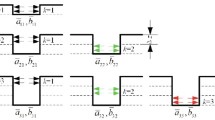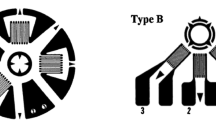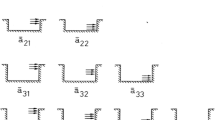Abstract
For residual stress analyses with the incremental hole-drilling method adequate evaluation formalisms in order to transform the measured strains into stresses are required. The Integral Method is the most important theory used for analyses of nonlinear residual stress depth distributions. It is based on a calibration, which is carried out by Finite-Element-Analyses. For the sake of simplicity the used numerical models often represent an ideally cylindrical hole and ideal elastic material behavior with fixed elastic constants. The adaption of the calibration coefficients from the numerical simulations to the real experimental state is often performed by simple correction factors or is ignored completely. The following investigation highlights the influence of the Poisson ratio on the calibration coefficients for the most commonly used strain gage rosettes geometries, which are standardized by ASTME837-08. It comes out that the application of existing simple correction factors is only valid within a small range and better approximations can be obtained by alternative strategies.










Similar content being viewed by others
References
Nobre JP, Dias AM, Domingos AJ, Morais R, Reis MJCS (2009) A windows-based software package to evaluate residual stresses by the incremental hole-drilling technique. Comput Appl Eng Educ 17(3):351–362. doi:10.1002/cae.20225
Münker J (1995) Untersuchung und Weiterentwicklung der Auswertungsmethoden für teilzerstörende Eigenspannungsmeßverfahren. Dissertation, Universität-Gesamthochschule Siegen
Schajer GS (1988) Measurement of non-uniform resiudal stresses using the hole-drilling method. Part I—stress calculation procedures. J Eng Mater Technol 110(4):338–343
ASTM (2008) Determining residual stresses by the hole-drilling strain gage method. ASTM standard test method E837-08. American Society for Testing and Materials, West Conshohocken
Schajer GS, Altus E (1996) Stress calculation error analysis for incremental hole-drilling residual stress measurements. J Eng Mater Technol 118:120–126. doi:10.1115/1.2805924
Scafidi M, Valentini E, Zuccarello B (2011) Error and uncertainty analysis of the residual stresses computed by using the hole drilling method. Strain 47(4):301–312
Xiao B, Li K, Rong Y (2009) Numerical study on calibration coefficients for hole—drilling residual stress measurement. Proceedings of the SEM Annual Conference
Schajer GS (1993) Use of displacement data to calculate strain gauge response in non-uniform strain fields. Strain 29(1):9–13. doi:10.1111/j.1475-1305.1993.tb00820.x
Kabiri M (1986) Toward more accurate resudual-stress measurement by the hole-drilling method: analysis of relieved-strain coefficients. Exp Mech 26(1):14–21. doi:10.1007/BF0231995
Schajer GS (1988) Measurement of non-uniform resiudal stresses using the hole-drilling method. Part II—practical application of the integral method. J Eng Mater Technol 110(4):344–349
Author information
Authors and Affiliations
Corresponding author
Rights and permissions
About this article
Cite this article
Nau, A., von Mirbach, D. & Scholtes, B. Improved Calibration Coefficients for the Hole-Drilling Method Considering the Influence of the Poisson Ratio. Exp Mech 53, 1371–1381 (2013). https://doi.org/10.1007/s11340-013-9740-7
Received:
Accepted:
Published:
Issue Date:
DOI: https://doi.org/10.1007/s11340-013-9740-7




